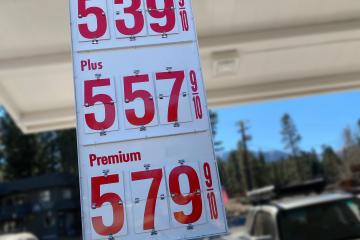- Name
- Jill Rosen
- jrosen@jhu.edu
- Office phone
- 443-997-9906
- Cell phone
- 443-547-8805
Laurence Ball is a professor of economics at Johns Hopkins University. He is also a research associate at the National Bureau of Economic Research and a consultant for the International Monetary Fund. He has previously been a visiting scholar at a number of central banks, including the Federal Reserve, the European Central Bank, the Bank of Japan, the Bank of England, and the Reserve Bank of New Zealand. His research topics include unemployment, inflation, fiscal and monetary policy, and financial regulation, and he is the author of The Fed and Lehman Brothers: Setting the Record Straight on a Financial Disaster (Cambridge University Press, 2018).

Image caption: Laurence Ball
The Federal Reserve—the Fed in common parlance—sat on its hands at its most recent meeting in September. After 11 straight meetings in which the Fed's Open Market Committee opted to raise interest rates, they elected to pause hikes. For now. When the raises began in March of last year, the rate was less than a 1%. Today it stands at 5.25% to 5.50%, the highest it's been in more than 20 years.
All this rate boosting was in service of stamping out inflation, which had topped 9% in June of last year but is now down to 3.7% as of August. But with the Fed stating that it seeks an annual inflation rate of 2%, hikes may will be back on the table when the Fed meets again at the end of the month.
Economics is nothing if not a numbers games, and a couple of weeks after the Fed's last huddle, the jobs report showed a robust 336,000 jobs were added in September, nearly doubling expectations. The 3.8% unemployment rate was unchanged from August—though up from recent low of 3.4%, it's still in historic-low territory. At the height of the pandemic, unemployment approached 15%.
What's next? Keep pausing and take a little victory dance or press on with hikes, knowing that last inflationary percentage points are the hardest to squash and going after them risks turning a would-be soft landing into something harder? Add in the Israel/Hamas war, which has already spooked oil markets, and there is more to ponder.
Economics professor Laurence Ball, who follows the Fed like others follow baseball teams, will be discussing these matters and more at a virtual discussion and roundtable on Thursday, Oct. 12, at 3 p.m. EDT called "Taming U.S. Inflation: Is Victory in Sight?" It's part of a new Engaging Economics webinar series. The event is free and open to the public, though registration is required.
For a taste of what will be discussed, we asked Ball a few questions.
What do we need to know about the Federal Reserve's current approach to managing inflation?
I would say the inflation news has basically been quite good over the last year. People can argue who should get credit. Until just very recently, oil prices have been going down. So there have been some sort of anti-inflationary events that were good luck rather than brilliance by the Fed. But overall, if you give them credit for the outcomes, they've brought inflation down substantially.
What does this mean for the average American family going forward?
A "soft landing" means bringing inflation down to a low level while keeping unemployment low. And I guess it's obvious why unemployment is bad for American families—if people lose jobs or are fearful of becoming unemployed. The public really hates inflation of 8% or 9%. But going back historically, when inflation gets below about 5%, it kind of drops out of the news and we can already see quite a bit less attention being paid to inflation now than a year ago. I think if inflation does level off at 3% or 4%, the public won't be clamoring that this is a national emergency. People might be more favorable toward Joe Biden, who likely gets the credit, rightly or wrongly, if they see inflation coming down while unemployment is staying low.
What happens next? What should the Fed do at its next meeting?
It's very hard to predict what they're going to do. But I would say if they're really serious about getting inflation down to 2%, and it's debatable whether they should be, they're going to probably have to tighten some more and slow the economy down some more.
Posted in Voices+Opinion, Politics+Society
Tagged economics, economy, government, public policy, 3-questions









